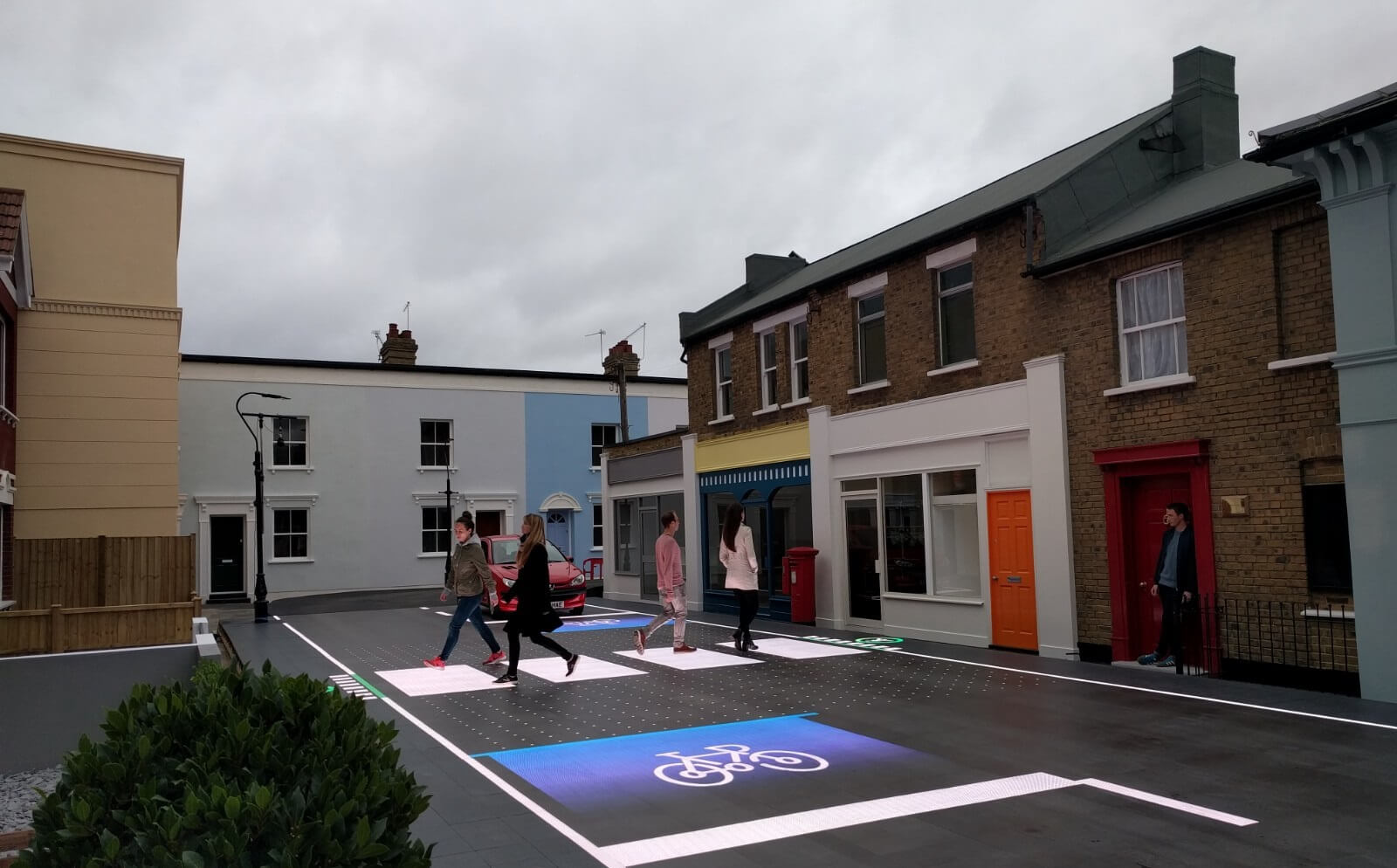So-called "sidewalk traffic lights" designed to stop mobile-using pedestrians from wandering into traffic have appeared in several locations, including Germany, Holland, and Australia. But in south London, an advanced crossing system could protect more than just smartphone addicts.
UK technology company Umbrellium developed the "Starling (STigmergic Adaptive Responsive LearnING) Crossing" alongside insurance firm Direct Line. It uses computer-controlled LEDs embedded in a road that are bright enough to grab the attention of pedestrians distracted by their mobile devices.
Additionally, the system uses cameras to monitor the crossing and illuminates the LEDs based on what they see. If someone walks out unexpectedly, for example, the lights will form a "large buffer zone" around them that makes their trajectory clear to drivers.
The Starling Crossing uses over 660 LED lights, which can change colors and patterns, while the cameras can relay information to the system in less than one-hundredth of a second.
As well as protecting those who are glued to their smartphone screens, the crossing can alert drivers and cyclists to pedestrians who may be in their blind spots. And if a lot of people are waiting to cross the road, it can widen to accommodate everyone.
The prototype is designed to remain slip-free even in the rain, and can support the weight of vehicles.
"The pedestrian crossings that we use every day are about 50 or 60 years old," said Umbrellium founder Usman Haque. "We're trying to update it for the 21st century with a crossing that deals with the fact that people are on mobile phones and they might not be looking up, vehicles might be coming more often, there might be pedestrians suddenly coming out at the end of a film."
Whether the Starling Crossing gets a wider roll-out remains to be seen. It may be an expensive system, but UK road safety charities are hoping it will arrive in more towns and cities across the country.
